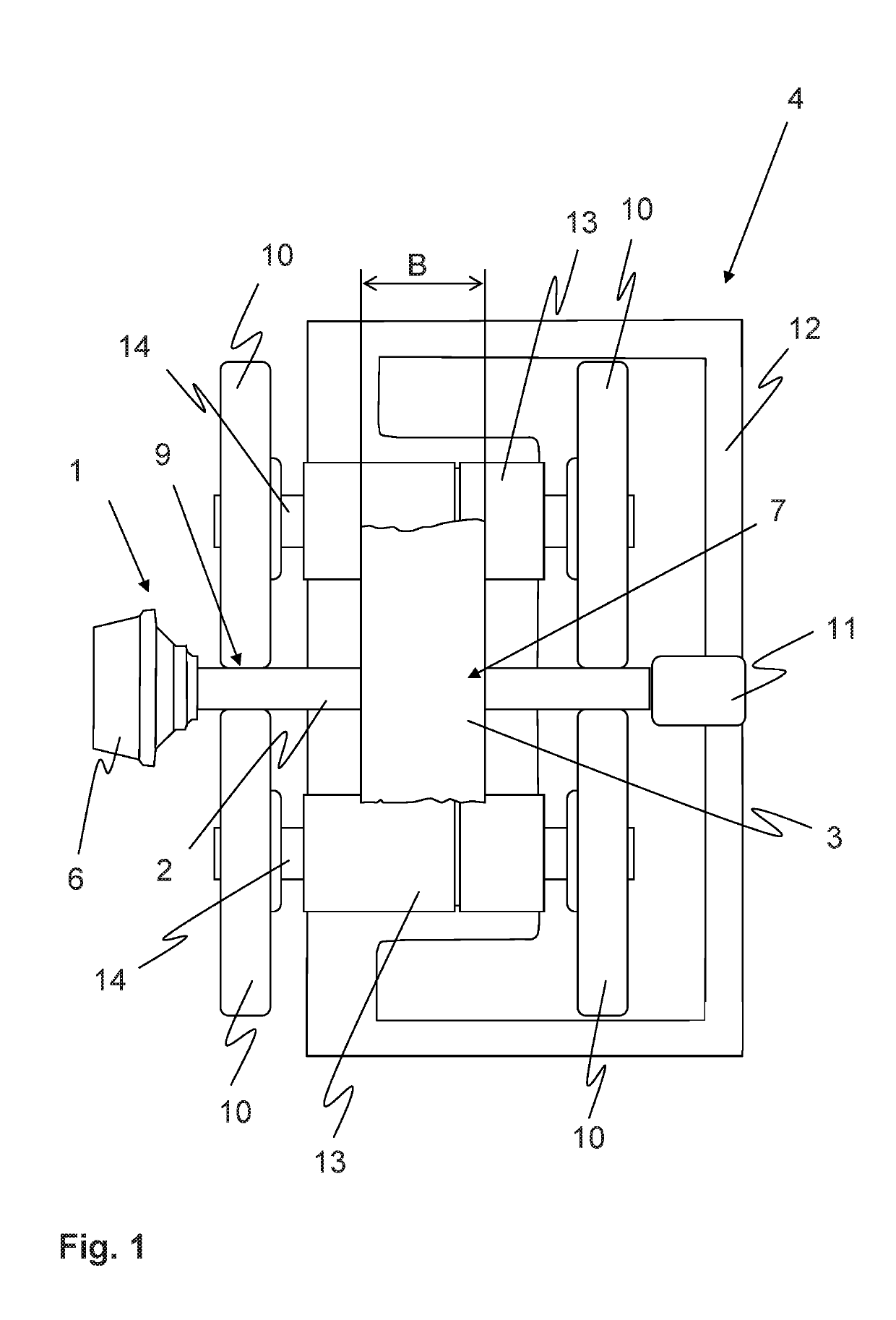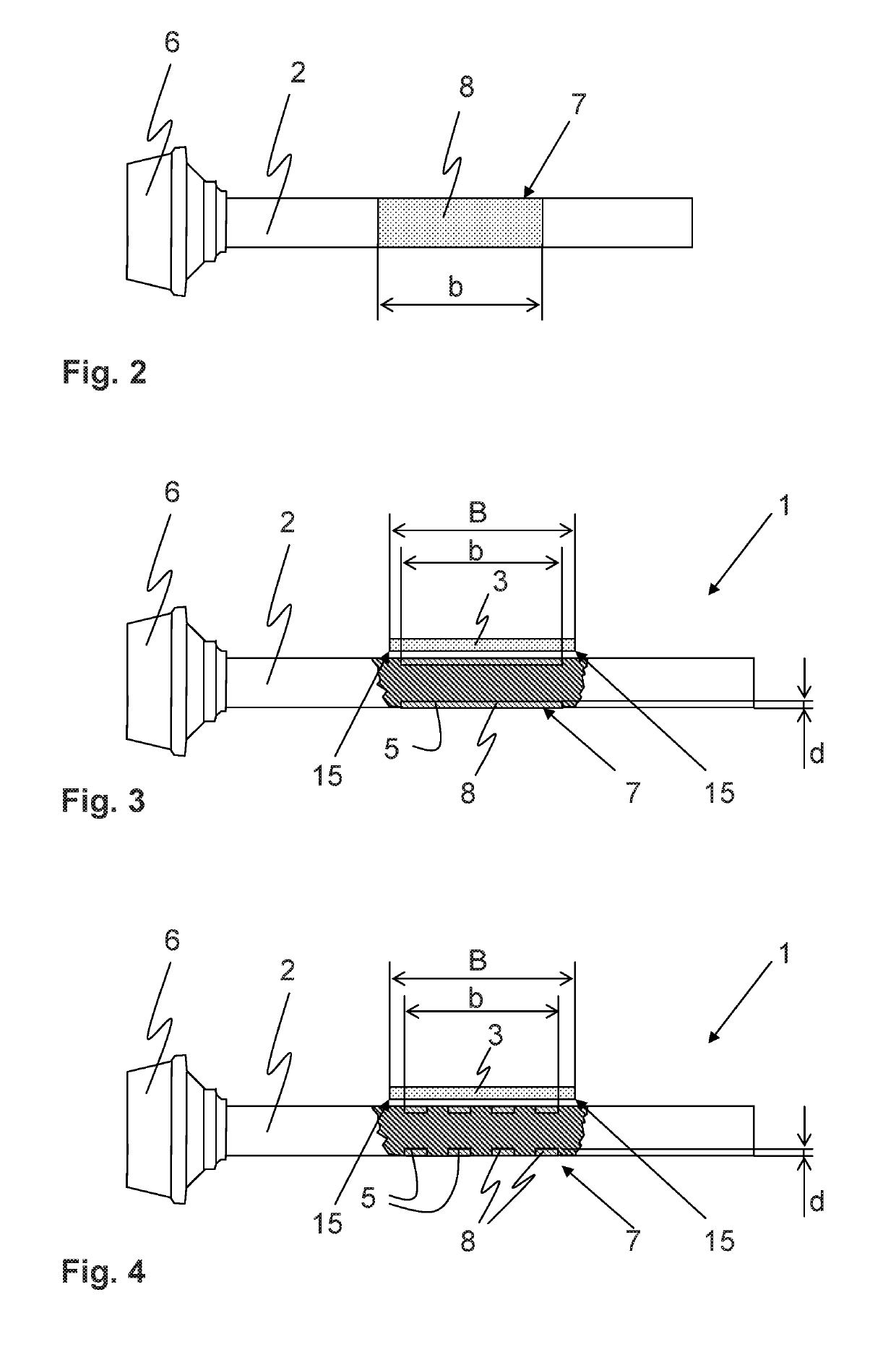Spinning Rotor for an Open-End Spinning Machine having a Friction-Enhancing Lining Made of an Elastomeric Material, and Open-End Spinning Machine
a technology of friction-enhancing lining and spinning rotor, which is applied in the direction of open-end spinning machines, continuous wounding machines, and paper mills. it can solve the problems of increased flexing work, wear and tear of the belt and the spinning rotor, and the rotor can only be accelerated very slowly or may never even reach the operating speed, so as to reduce the wear of improve the force transmission between the belt and the rotor sha
- Summary
- Abstract
- Description
- Claims
- Application Information
AI Technical Summary
Benefits of technology
Problems solved by technology
Method used
Image
Examples
Embodiment Construction
[0021]Reference will now be made to embodiments of the invention, one or more examples of which are shown in the drawings. Each embodiment is provided by way of explanation of the invention, and not as a limitation of the invention. For example features illustrated or described as part of one embodiment can be combined with another embodiment to yield still another embodiment. It is intended that the present invention include these and other modifications and variations to the embodiments described herein.
[0022]FIG. 1 shows a schematic top view of an open-end spinning device 4 comprising a spinning rotor 1 and a belt 3 for driving the spinning rotor 1. In this case, the spinning rotor 1 usually consists of the rotor shaft 2 and a rotor cup 6, which can be removably as well as fixedly connected to the rotor shaft 2. The spinning device 4 includes, in the usual way, a bearing device for the spinning rotor 1, which is designed in the form of a support disk bearing in this case. Two sup...
PUM
| Property | Measurement | Unit |
|---|---|---|
| thickness | aaaaa | aaaaa |
| thickness | aaaaa | aaaaa |
| thickness | aaaaa | aaaaa |
Abstract
Description
Claims
Application Information
 Login to view more
Login to view more - R&D Engineer
- R&D Manager
- IP Professional
- Industry Leading Data Capabilities
- Powerful AI technology
- Patent DNA Extraction
Browse by: Latest US Patents, China's latest patents, Technical Efficacy Thesaurus, Application Domain, Technology Topic.
© 2024 PatSnap. All rights reserved.Legal|Privacy policy|Modern Slavery Act Transparency Statement|Sitemap


